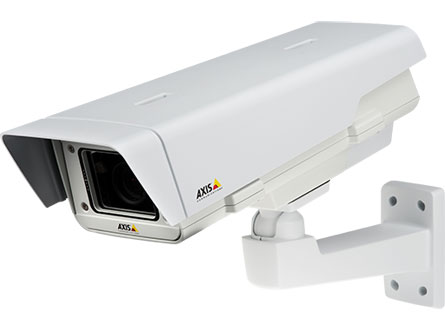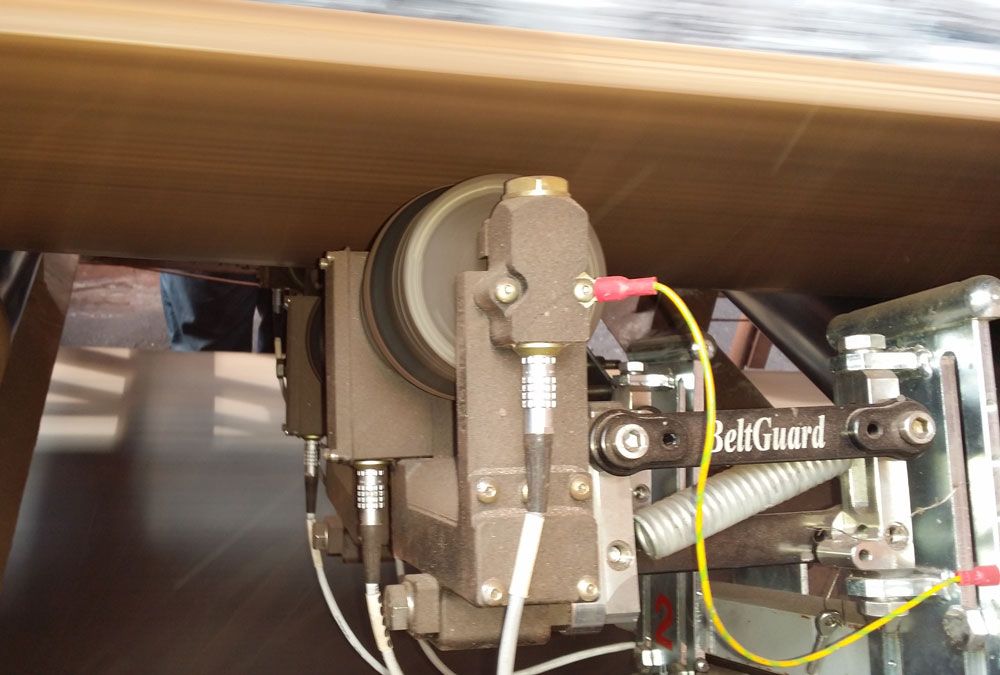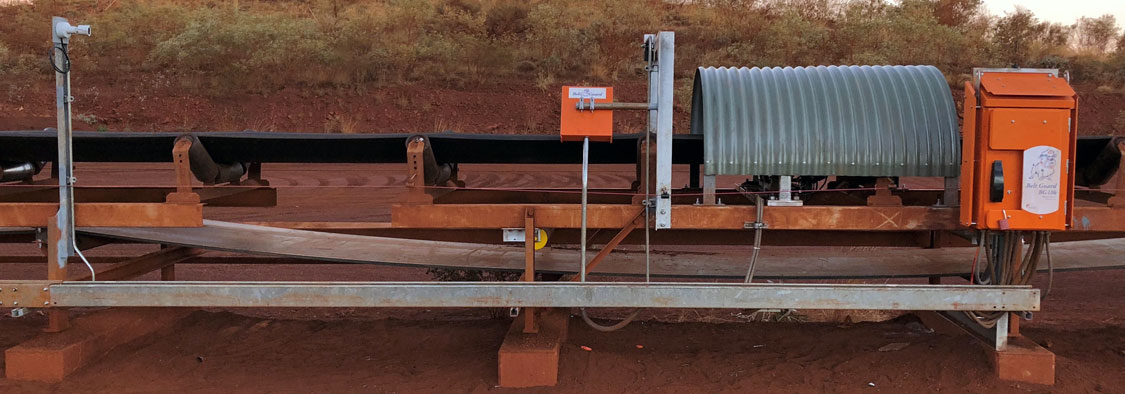
How it Works
The BG10k Rip Detector injects acoustic energy into the pulley cover of the target belting at the sensing location and this energy propagates across the belt using the rubber and steel matrix as the transmission medium.
The energy is injected by a transmitter Transducer and sensed by a number of receiver Transducers, located at various positions across the belt. When a longitudinal rip occurs between the Transducers, the level of acoustic energy arriving at a receiver is either reduced or lost completely. This reduction of energy level is used to detect the rip.
The device does not work equally well or all types of belting, for this reason we require a small (1000mm x full belt width) sample of the target belting to be sent to our works for evaluation.

Transducers
The Transducers can act as both a receiver or transmitter and are interchangeable across the belt width. They are consumable items and a re-build service is available when they need changing out. The cost of a system is Transducer/belt-dependent and each type of belting performs differently. Therefore, a sample piece of belting from the target conveyor is needed to be shipped to Beltscan Systems to determine the size and thus the cost of the system.
More information on maintenance below.

Communications
The Main Electrical Enclosure or MEE connects the system to a Site's SCADA and Network (optional). It is the hub of the Rip Detector and is capable of allowing Global communication as well as connection to other Belt Guard systems.
Connections include an Ethernet port and a Control Cable that communicates with Site's SCADA system. Data and device configuration parameters are accessed via the Ethernet port.
Technical support is via the Internet over a Site's LAN (VPN or limited network access) or via a dedicated Mobile Broadband Modem. This allows the device to be monitored remotely and software upgrades to be rolled out when available.Our Belt Guard range of products is designed to work together to form a holistic conveyor belt monitoring solution. The MEE is capable of inter-connecting multiple Belt Guard devices. A single software platform is used, Belt Guard Boss, to service the entire range, making upgrading and adding devices a simple procedure.

Robust and Reliable
The Rip Detector has been tried and proven in harsh working environments around the world and is very robust and reliable. A maintenance plan is suggested to ensure high detector availability, but basic wash-down and maintaining correct alignment is essential.
Current installations include Steel Mills, Iron Ore mines, port facilities, overland conveying of Coal, Coke, Alumina and Copper mines.

Installation
Installation can be achieved in two ways;
- by using one of our product specialists on site to oversee the procedure, or
- by using detailed instructions, drawings and plans provided by the manufacturer. Two stages are involved, the first is the installation of transverse framework and hardware and the second, is the termination of power and SCADA and then commissioning/testing.
Installation support is provided via the Internet, over a Site's LAN (VPN or limited network access), or via a dedicated Mobile Broadband Modem.

IP66 Enclosures and Parts
The Main Electrical Enclosure (MEE) is fabricated from powder coated 316 stainless steel and rated at IP66 (NEMA 4). It is installed with sun shades and a sloping roof to prevent build-up of product.
The System includes a set of Transducers and Mounts, a Slurry Detector probe, an RFID antenna and a high-definition IP camera.

Maintenance
Routine maintenance of the BG10k is limited to regular water wash-down of the Transducers and Mounts, ensuring the system is kept relatively free from product build-up. Excessive product build-up will lead to premature Transducer failure.
Wear in the Transducers can be monitored via software and a timeline for replacement can be estimated based on trending.
Proper Transducer wheel alignment and free Mount movement are critical.

Re-build Service
The Transducers are consumable items and need to be replaced at the end of their life cycle. The four images show the SAME Transducer undergoing a re-build.
As part of the re-build service, the Transducers must be returned to the Beltscan factory. We recommend holding spare Transducers in store to keep the BG10k On-Line and operational during Transducer re-building.
Service life of a Transducer varies inversely with belt speed and is effected by environmental conditions and the quality of on-site maintenance.

Optional Extras
Optional extras include;
- IP Camera Video Surveillance
- Protective weather shields for enclosure
- Climate control for extreme environments
- Mobile Broadband modem for remote support and eMail alerts to personnel.

Technical Specifications
| Application | |
| Belt Type | Steel Cord |
| Belt Width | No limit |
| Main Electrical Enclosure (MEE) | |
| Construction | 316 Grade Stainless Steel IP66 |
| Size (mm) | 700 x 500 x 220 |
| Electronics | |
| Power Supply | 24VDC (110/220VAC 60/50Hz optional) |
| Power | ~100W |
| Communications | TCP/IP Ethernet, PLC Control Cable and 4G Modem |
| Operating Temperature | -13 ~ 158°F(-25 ~ 70°C), 5 to 95% RH |
| Storage Temperature | -13 ~ 158°F(-25 ~ 70°C), 5 to 95% RH |













